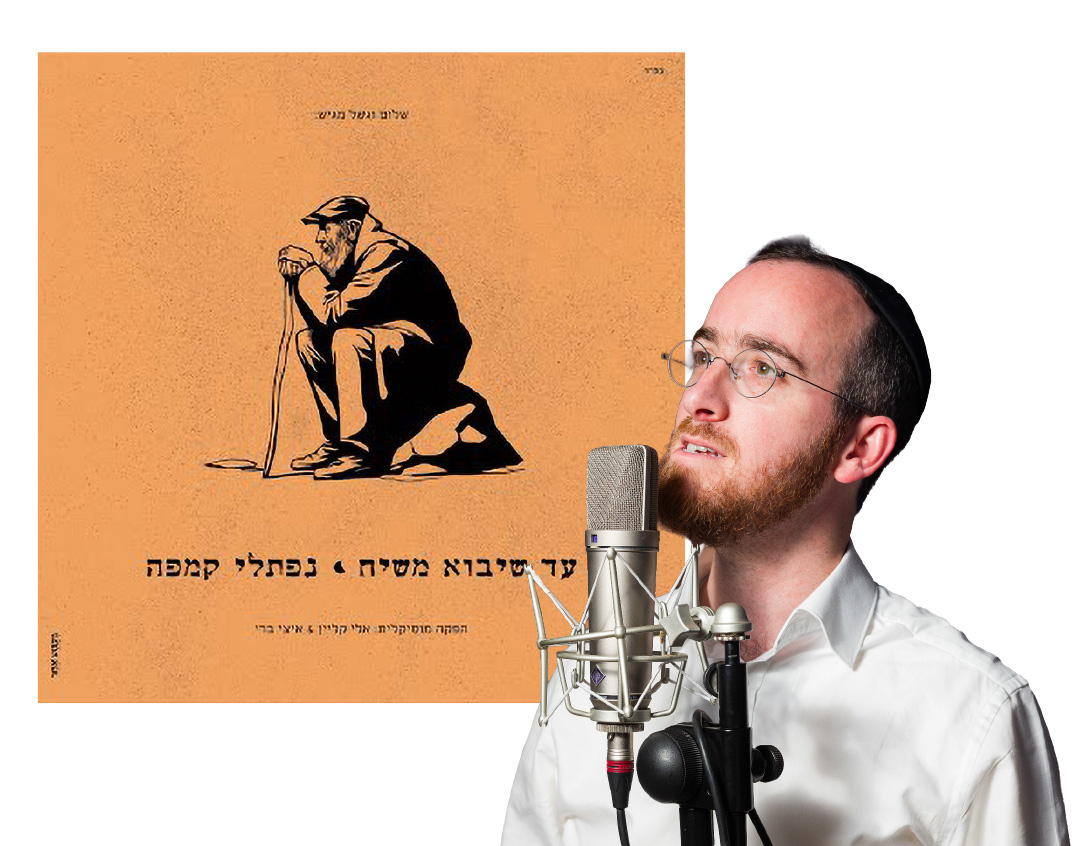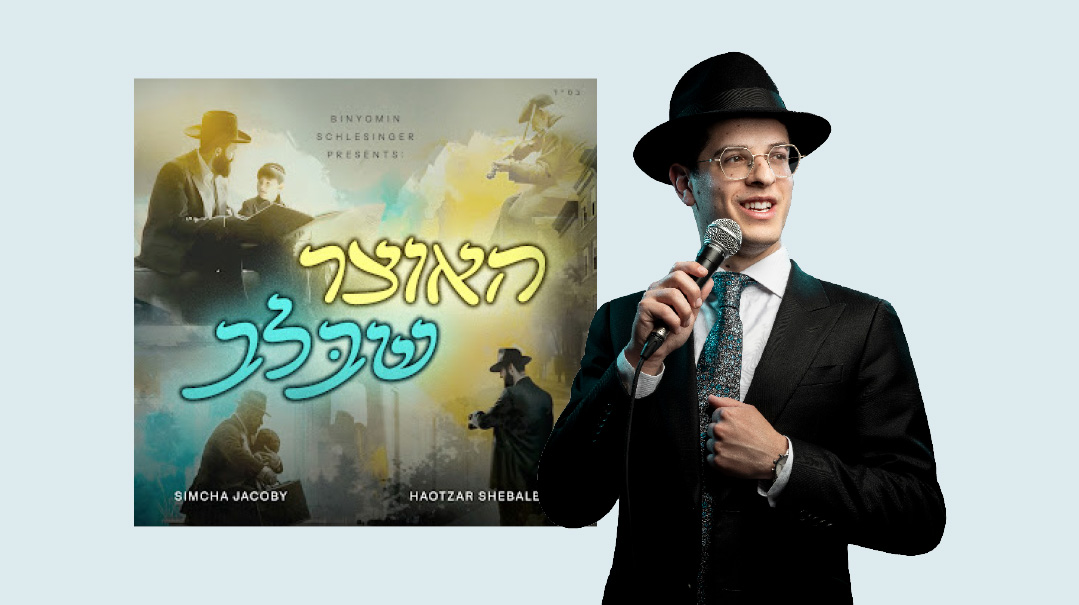Just for the Record
| May 2, 2018
O
n Lag B’omer the speakers go back on, as music fills the air with the sounds of joy, longing, happiness, dancing, yearning, and myriad other emotions that reflect the Jewish soul.
But what goes into creating all the beloved Jewish songs out there? It’s no longer just about a singer, a guitar, and a microphone. With the development of digital music technology, how does an album today go from the germ of inspiration in a composer’s mind to the playlist on our screens and CD covers?
1. Patience and Personality // The Singer
An album usually begins with a singer’s dream. When enough people tell a performer that it’s time to get an album out there, he’ll think of taking his next big step. Ideally, the album then becomes the fuel for his career. “To go for an album, a singer needs more than a really good voice. He needs patience, the right attitude, personality — and a great voice,” says producer Sruly Meyer. “If he has them, he will probably eventually get ‘discovered’ by a producer or agent.”
Not so long ago, music producers would make the investment of funding albums, but today, the crowded Jewish music scene means that it’s the singer who needs to foot the bill. Most will either save up, borrow, or raise funds to put down into that debut album.
Been There
“I believe that a singer needs to wait until people are literally begging him to release an album,” says Simcha Leiner. “After I wrote ‘Kol Berama,’ I sent it around to see if anyone wanted to buy it. Yochi Briskman responded to my e-mail, saying the song is so beautiful, I should keep it for myself.” And he did, releasing it as a single in 2008. Fast-forward a couple of years, and Yochi’s son Yanky, an arranger, introduced the singer to the producer. In 2014, Yochi produced Simcha’s debut album Pischi Li, and five more albums followed.
2. A Second Ear // The Producer
Funds in hand, the first thing a singer looks for is a producer. “No one can rely solely on his own musical taste,” explains composer Yitzy Waldner. “The producer is the second ear of the project. So the singer needs to look for someone he can trust to hear his vision, yet balance it for the good of his career.”
In addition, an experienced producer has a foot in the door of studios, arrangers, and technicians, which the singer will need.
But take any two creative voices and there’s going to be some dissent. Ten years ago, producers had the final say about everything, but today, singers are paying the piper, so sometimes, they call the tune.
Been There
Doni Gross was the producer for the Leil Shishi album, an easy-listening collection of Shabbos songs which Yossi Green composed over the years. The lead vocals are sung by Shlomo Simcha, the background vocals by Yossi Green and an adult choir. Gross recalls working out the different visions. “Choir vocals can sometimes be a little boxy, because it's different to have four or five choir members sing with detailed nuances. On Leil Shishi, we spent a lot of time making them shine. Yossi’s singing provided an integrated harmony to the main melody. Then, when we mixed the songs, Yossi suggested it made sense for them to be stronger than the usual background harmony. Initially we were unsure — it’s not usually done — but once we tried it we were thrilled with the powerful effect.”
3. Those Songs We Love // The Lineup
An album is only as good as the collection of its songs. Some singers, like MBD, write a lot of their own material, but even so, they assemble the material together with the producer. This can take between three and six months, with the singer listening to over a thousand songs in order to choose ten that really hit him. There is no space for fillers — the singer and producer have to find songs that really speak to them.
Songs can come from anywhere — from an amateur demo from a yeshivah bochur to a song composed by veterans of the industry. Most composers use a keyboard or guitar to record a demo, but some just send in their own phone-recorded vocal, leaving plenty to the imagination.
An original song usually costs somewhere between $800 and $1,600, depending on the name and experience of the composer. New composers, eager to get their songs “out there,” may sell them for $300, while top composers can charge way above this scale. Sometimes the songwriter gives his composition to a middleman, who takes the raw song and prepares a professional quality demo, which has a greater chance of catching a singer’s attention.
Been There
“Composer Elimelech Blumstein often sends me a voice recording of his new compositions, and I edited the raw song, smoothed out the rough edges, and prepared a quality demo with music to help the song stand out and attract the singer,” says Ari Goldwag. “That was the case with ‘Omar Dovid’ picked up by Dovid Gabay, ‘Shaarei Mizrach’ picked up by Avraham Fried, ‘Batuach Ani’ picked up by Yaakov Shwekey, and ‘Dawn of Moshiach’ picked up by Benny Friedman.”
4. Collaborative Creativity // The Process
Sometimes, the creative journey is joint effort, with the singer giving input to the composer as they sit down together to create the perfect song. Traveling from the concept of a song to its actual recording is a process, akin to the idea for a painting becoming a physical piece of art.
Been There
“We had around ten different versions for the high part of Avraham Fried’s ‘Itcha Ani — Am Yisraeli Chai,’ ” says Yitzy Waldner, who composed the lead song on the Bring the House Down album together with Fried. “There were a lot of options for the part that goes ‘Im haTorah, im haBoreh…’ I had written something, but Avremel wasn’t happy. I wanted the tune to lift up, to have some excitement at the end, and he kept slowing and going down. He was on a concert tour in Kharkov, Ukraine, and he called me from there. ‘Do you like it like this?’ and it was perfect. A classic case of two creative voices, but eventually we found something we were both happy with.”
5. On a Different Note // Staying New
When a singer has a great album out there and is working on another one, the challenge is not to copy whatever he did that worked the first time. “You always want something new and fresh, and sometimes it feels like we’ve reached the end of fresh,” says producer Sruly Meyer. “But in the end, something new is bound to come out.”
Been There
“Look at Meilech Kohn. If someone had told you two years ago that there would be a new song called ‘Ve’ahavtu L’reiacha Kamocha,’ you would have groaned,” says Sruly Meyer. “But he created something totally fresh.”
6. Making It Shine // The Arranger
Once the singer and producer have chosen a song, they make sure that the singer can reach all notes comfortably. Then the demo is sent to a musical arranger. Yitzy Waldner says that he likes to send a recording of the vocals alone as well, so the arranger can hear the singer’s voice and the music can be customized to suit it.
The arranger listens to the song and tries to “wrap it in the right musical wrapping paper,” says composer Yitzy Berry. He decides on the number of instruments and what each of them will play. He has to decide if the style should be folk, classical, rock, or funk; if the music should be live, electronic, or a hybrid. The tempo, and the right range and key for the singer, are all his domain, as is writing the score for each musician. Years ago, the arranger would hand over a bundle of sheet music, but nowadays, a computer-generated simulation of the musical arrangement is prepared for the producer to approve.
Arranging a song can take from one or two days up to a few months. “The arranger wants to make the song as interesting as possible, without taking away from its essence,” Yitzy explains. “The song needs an opening, an interlude, and chords, but you don’t want to add a whole new classical piece.”
Been There
Anyone who came of age during the 1990s surely recalls the famous introduction (“da-da-da dum, da-dum da dum / da-da-da-dum, da-daa da dum”) for “Ve’atah Banim Shiru LaMelech,” composed by Rabbi Hillel Paley. But when he wrote the catchy tune to the powerful words from the piyutim in Shavuos Second Day Mussaf, the intro wasn’t part of it. “Moshe Laufer brought the song to the Jewish music world, and it was a fresh, new sound,” says Reb Hillel. Laufer added the now-famous intro, as the arranger for Yeedle Werdyger’s third and most popular album, Shiru LaMelech, where the song was the lead track.
7. Is It Real? // The Music
Obviously, songs using only electronic music are much quicker and cheaper to record than live musical accompaniment. Live recording means that each instrument requires its own separate studio recording time. One option for an album on a budget is that drum, guitar, and bass can be recorded live, and strings can be added electronically.
Been There
“It all depends on the song, and the atmosphere you’re trying to create,” explains composer Yitzy Berry. “For some songs, the cold electronic sound is actually preferable. For example, on MBD’s Tzaakah album, released last year, the lead song ‘Tzaakah’ has no live music. It’s all computer-generated, giving it sort of a futuristic feel. But on the same album, ‘Yaaleh,’ a heartfelt plea for our forgiveness, uses only live instruments.”
8. Layers of Sound // The Studio
Finally, it’s time to record. It can take months for studio time to be arranged for all musicians involved in the project. Once all the music is recorded, the vocals are recorded — first by the artists and then by the choirs. The producer is present throughout, often coaching every note, making sure the very best sound is recorded. Nowadays, either the producer or an engineer will usually do a vocal edit. The song will be sung 20 times, and he’ll choose the best parts of each line to “stick together” into one vocal track.
9. Keeping Track // The Mix
When all the material is ready, the arranger’s job is over and the recorded material is passed on to the mixer. Since each element is recorded on a different track, there are usually between 100 and 200 tracks sent to the mixing engineer. The drums alone, for example, typically consist of 13 tracks: snare drum, bass drum, hi-hat, tom, and the rest are each recorded separately.
Working in a specialized mixing studio, the mixing engineer listens to each track and decides where to change frequencies and adjust volumes on each track individually, so that the sound of one instrument doesn’t overwhelm another. To do this, he needs to connect to the atmosphere of a song: Is it supposed to feel like a solitary singer strumming on his guitar, or like a full orchestra providing dance music at a wedding? How vibrant or minimalist should the sound be?
The singer and producer might interest the mixer to maintain a traditional chassidish feel, or give him more leeway for his own originality.
A saxophone solo has to be loud, but a sax harmony has to be quieter. A dance song with a strong “kick” will need a stronger sound from the brass instruments. A good mixer also adds his own touch to the music, creating ups and downs, letting the sound move.
Been There
Mixing engineer Chaim Gottesman says that mixing a standard song is usually one day’s work involving some back and forth with the producer. Where the recording is less professional, if the arranger has overlooked something, or if an artist is using material recorded in his home studio, the mixer’s work will be more intense, as he troubleshoots conflicts in the music. Chaim did the mix on the recently released Pesach single “Mach Shoin Lechtig,” sung by Pinky Weber and Yisroel Adler. He says that the arrangements, written by Moshe Laufer, play on the song’s refrain “Uv’chein vayehi b’chatzi halailah.”
“In the music at the song’s opening, there’s a dark, nighttime feel,” Chaim says. “I wanted to amplify that atmosphere, so when I mixed the song, I made certain tracks a little more dramatic.”
10. Pulling It Together // The Master
The final stage, mastering, is usually carried out by another engineer. His job is to look at the album as a whole, putting all ten songs together and making sure the volumes are equal and have the same frequencies. The mastering engineer is the final professional ear on the project, before the album is ready to be copied.
11. Time to Celebrate // Press Play
On average, producing an original music album costs about $70,000. At the low end of the budget, some studios offer an all-in-one package deal — arranging, recording, mixing, and mastering — for $35,000 to $40,000. These figures, however, don’t include marketing, distribution, or music video production, which increase the investment substantially. In today’s crowded Jewish music market, few singers who make an album recoup their investment in sales (and illegal copying also cuts revenue), but their hard work pays off when those beautiful songs and soaring vocals catch the attention of fans, and the wedding and concert bookings start to roll in.
Jewish music singles and albums are released all year round, and with a vibrant medley of authentic Jewish music for every taste — composed, recorded, arranged, mixed, and mastered by inspired frum artists and readily available — it’s definitely a reason to celebrate.
(Originally featured in Mishpacha, Issue 708)
Oops! We could not locate your form.













